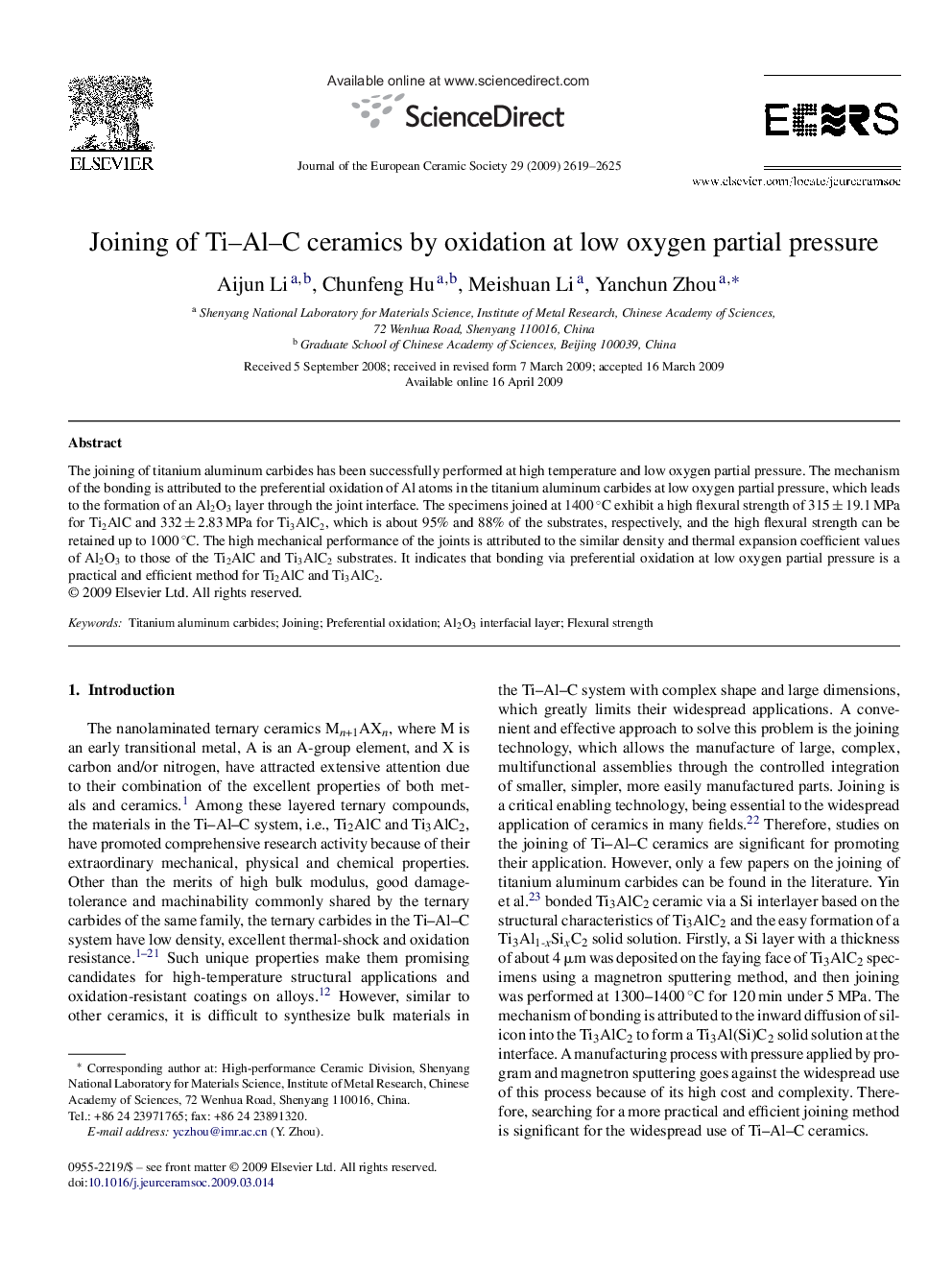| Article ID | Journal | Published Year | Pages | File Type |
|---|---|---|---|---|
| 1477322 | Journal of the European Ceramic Society | 2009 | 7 Pages |
The joining of titanium aluminum carbides has been successfully performed at high temperature and low oxygen partial pressure. The mechanism of the bonding is attributed to the preferential oxidation of Al atoms in the titanium aluminum carbides at low oxygen partial pressure, which leads to the formation of an Al2O3 layer through the joint interface. The specimens joined at 1400 °C exhibit a high flexural strength of 315 ± 19.1 MPa for Ti2AlC and 332 ± 2.83 MPa for Ti3AlC2, which is about 95% and 88% of the substrates, respectively, and the high flexural strength can be retained up to 1000 °C. The high mechanical performance of the joints is attributed to the similar density and thermal expansion coefficient values of Al2O3 to those of the Ti2AlC and Ti3AlC2 substrates. It indicates that bonding via preferential oxidation at low oxygen partial pressure is a practical and efficient method for Ti2AlC and Ti3AlC2.
